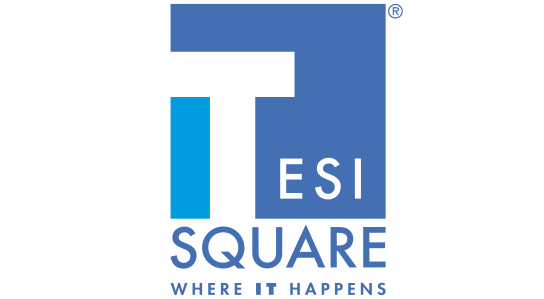Peak Season 2025 is about to begin and the eCommerce sector is preparing to face, as it does every year, the most intense wave of orders. But while in previous years the focus has been on deliveries, today it is returns that are the most complex issue.
It is during the busiest months that eCommerce returns reach their highest and most difficult-to-manage volumes. The reason is simple: the significant discounts typical of Peak Season attract many consumers, who often find themselves making the wrong purchases or impulse buys that they later regret. The result? A return.
The question we want to ask ourselves is whether it is possible to transform returns management into a decisive factor for the economic and environmental sustainability of the supply chain. The answer – spoiler alert – is yes!
With a global value exceeding £1 trillion per year and an average return rate of around 30%, reverse logistics can no longer be considered an ancillary activity: it is a structural process that, especially during peak season, can make the difference between eroded margins and new value opportunities. In this scenario, Out Of Home delivery and return solutions, such as lockers and collection points, are emerging as a strategic infrastructure capable of standardising traditionally chaotic and costly flows.
In this article, we analyse how and why the way returns are managed is changing, and which operational levers can truly transform reverse logistics into a competitive advantage for retailers, logistics operators and carriers.
The new ‘returns economy’: why reverse logistics can no longer be linear in 2025
A £1 trillion problem
The economic impact of returns has now reached proportions that no operator in the supply chain can ignore. Worldwide, their value exceeds £1 trillion per year; in the UK, the e-commerce return rate reaches 40% and involves 18 million consumers. These figures are set to increase during the peak promotional and commercial months, when operational pressure increases and errors – or inefficiencies – have a multiplier effect on costs.
The fashion sector is the most exposed: in Italy alone, returns in this sector generate a cost of €2.5 billion and are responsible for 23 million tonnes of CO₂. These figures tell the story of a supply chain that can no longer afford to treat returns as an anomaly.
From the linear model to the circular ‘5R’ model
According to the traditional model, logistics followed a linear supply chain: production, distribution, consumption and end of life of the product. However, the increase in e-commerce volumes, and especially returns, has made it clear that this model is no longer sufficient to meet market demands.
Reverse logistics thus becomes a structural part of the supply chain and shapes a circular logistics model based on the 5R paradigm: Return, Resell, Repair, Recycle, Replace, which focuses on value recovery throughout the product life cycle.
Returns thus become a cycle in which the product can generate value again, both economic – through resale or replacement – and environmental, thanks to recovery and regeneration. The goal is no longer to ‘manage an error’, but to integrate a process that, if well designed, reduces waste and costs.
Bracketing, flow variability and out-of-control costs: the three emergencies for eCommerce
Bracketing as a structural habit
One of the main causes of the increase in returns in the e-commerce sector is the phenomenon of ‘bracketing’, i.e. the simultaneous purchase of several variants of the same product (typically different sizes or colours) with the intention of returning most of them. This is no different from what happens in any retail store fitting room, but with very different costs.
The result is a high and irregular volume of returns, which makes it very difficult to predict and plan flows. It is precisely this unpredictability that triggers inefficiencies and additional costs throughout the entire supply chain.
Where hidden costs arise: non-standardised processes and poor visibility
The economic impact of bracketing, and more generally of the growing habit of eShoppers to frequently return purchased products, translates into increasingly heavy costs for eCommerce. Suffice it to say that the average cost of a return varies between £8 and £12, depending on the product and the supply chain: a value that often exceeds twice the cost of delivery.
These costs are not only due to the volume of returns, but also to three structural critical issues in reverse logistics:
- less standardised processes compared to delivery,
- highly variable flows that are difficult to plan;
- uncertain final destinations, which generate accumulations, delays and inefficient use of resources.
It is the combination of variability and asymmetry between delivery and returns that makes the entire process so costly.
From disorganisation to margin loss, the ‘cost of chaos’
When unpredictable volumes are combined with poorly standardised processes, the result is what many operators refer to as the ‘cost of chaos’: warehouses that quickly become saturated, verification and sorting of returned products that slow down operations, and transport that multiplies, further eroding margins.
In such a scenario, returns can no longer be considered merely an ancillary phase of after-sales service. Instead, they become a strategic factor, capable of directly affecting overall profitability and, especially during peak season, the level of service offered to customers.
New operational solutions: micro-factories, automation and OOH networks
Micro-factories as an emerging model
An innovative response comes from the ‘micro-factories’ model: small local centres dedicated to receiving, sorting and reconditioning products.
This approach reduces the distance travelled by returns, avoiding unnecessary transport to centralised hubs and shortening the time taken to return the product to the supply chain.
Why Out Of Home returns reduce costs and CO₂
Returns via lockers and collection points are undoubtedly the most effective solution for standardising and consolidating flows.
By concentrating returns at strategic physical points, home collection rounds are reduced, distances travelled are shortened and missed deliveries are decreased.
With over 500,000 collection points and lockers, GEL Proximity offers companies a widespread network to optimise the reverse logistics phase, reducing costs and environmental impact. Find out more.
Technology and data visibility: the missing link
For years, returns management has remained one of the least digitised segments of the supply chain. While the delivery phase has been enhanced with tracking systems, arrival forecasts and optimisation tools, reverse logistics has continued to operate in an opaque environment, where neither e-commerce companies nor carriers had real visibility on what was being returned, when it would arrive and where it should be sent.
It is precisely this lack of structured information that generates the bottlenecks typical of reverse logistics: warehouses unprepared to receive unexpected volumes, slowed sorting processes, non-optimised transport and operational decisions based more on urgency than planning.
New technologies for integrating and orchestrating flows are finally filling this gap. By connecting different systems – those of e-commerce, couriers, collection points and logistics centres – they enable:
- know in advance the volumes of returns arriving;
- automatically direct each return to the most appropriate logistics hub;
- standardise information on product status, location and type;
- distribute flows across Out Of Home networks that consolidate returns, avoiding sudden congestion.
In this way, returns are no longer a disorderly and unpredictable flow, but a process that can be monitored, planned and managed, with tangible benefits for every player in the supply chain.
Home collection, in-store returns or OOH? A comparison of models
Home collection is the most expensive model
Home collection remains the least efficient option for managing eCommerce returns, especially during peak periods. Each return requires a dedicated visit to a single address, with no possibility of consolidating collections and a high probability of failed attempts if the customer is not present. This results in longer times, higher operating costs and an inefficient use of resources and personnel. It is therefore not surprising that home collection is the most expensive model and the one that struggles most to scale when volumes increase.
In-store returns: optimal for brands, less so for marketplaces
Returns at a brand’s point of sale are an effective solution for retailers with a physical network, as they bring traffic back to stores, reduce logistics costs and speed up any replacements or product exchanges. It is therefore a model that works well when the company directly controls both the online and offline channels. But what about when this is not the case?
For marketplaces and merchants that operate exclusively online, this option simply does not exist. Without their own stores, in-store returns become an impractical option or one that can only be applied in a limited way through dedicated partnerships, making it a non-scalable model for those who base their business solely on digital sales.
Lockers and PUDOs: the solution that standardises variability
Out-of-home networks, such as lockers and collection points, are now the most efficient solution for managing returns on a large scale. Unlike home collection, they allow returns to be concentrated in physical hubs that operate with uniform schedules, procedures and flows. This standardisation makes management much more predictable: returns arrive at already equipped locations, are consolidated and can be quickly routed to the most suitable logistics centre.
The result is a stable and scalable process, capable of absorbing volume peaks without clogging the network and without generating the additional costs typical of more dispersed solutions.
In 2025, e-commerce returns must be seen as a competitive lever
In light of what we have seen so far, it is clear that returns management is undergoing profound change. Out-of-home solutions are not simply a logistical alternative, but the element that allows a historically chaotic flow to be transformed into a stable, predictable and sustainable process. Standardising variability, consolidating returns and making them plannable means reducing costs, improving operational efficiency and lightening the environmental impact of the entire supply chain.
Reverse logistics is thus entering a new phase: from a cost centre that is difficult to control to a real competitive lever, capable of generating value for eCommerce, logistics operators and transporters. In an increasingly challenging market, knowing how to manage returns intelligently is no longer an optional advantage, but an essential requirement.
Do you want to turn returns into a competitive advantage for your e-commerce or logistics network?
Request a dedicated demo and find out how to integrate GEL Proximity technology into your online store to better manage your returns.













